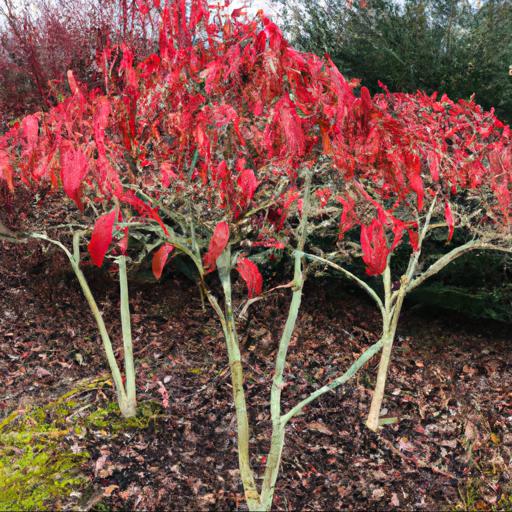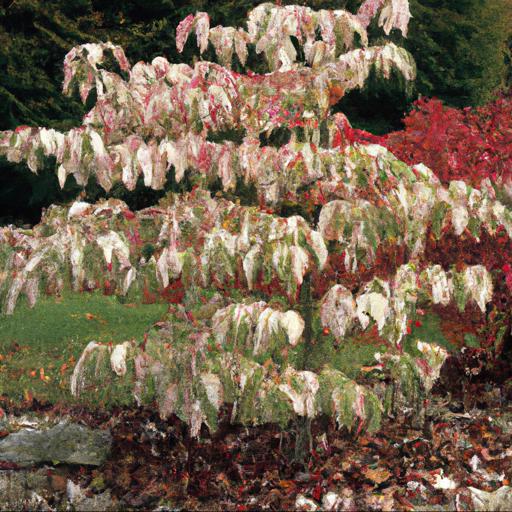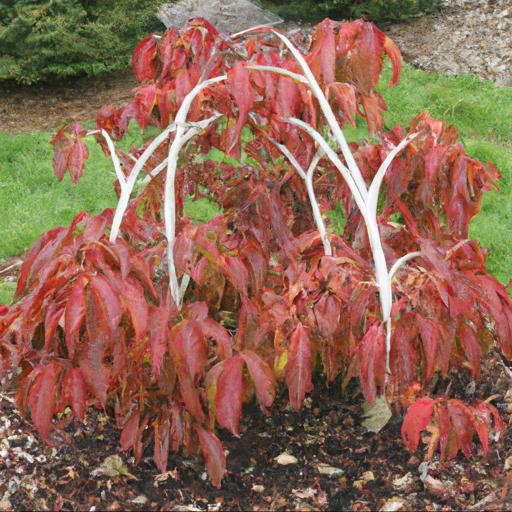Are you looking for a winter-flowering shrub that will add a splash of colour to your garden this season? Dogwoods are a great choice!
With their vibrant blooms and hardy nature, they are perfect for adding a bit of life to your outdoor area during the colder months. Here, we will discuss the best dogwoods for winter colour and how to care for them so they can thrive in your garden. From varieties that offer a range of colours to those that are more tolerant of cold weather, we will help you find the perfect dogwood for your landscape.
Types of dogwoods for winter colour

When considering the best dogwoods for winter colour, it really comes down to personal preference. There are many varieties to choose from, each offering unique traits that can add to the landscape of your garden.
Dogwoods are known for having an incredible range of colours in their bark and blooms, making them a great choice for brightening up a winter garden. In addition to the vibrant colours, dogwoods possess a high resistance to cold temperatures, making them ideal for colder climates. One variety which stands out for winter colour is the red osier dogwood, also known as Cornus sericea.
This shrub can be found in many parts of the world and is easily recognisable due to its deep red bark and white flowers. This plant is especially vibrant in winter, as the dark bark creates a striking contrast to the nearby snow. The red osier dogwood may also produce white-tinged, red berries which can add an extra bit of colour to your winter garden.
The stems of red osier dogwood also have a unique habit, emerging as bright yellow and changing to a deep orange colour in the winter. This habit adds unique interest in colder months, as it creates a contrast to the vivid red boughs.
Many gardeners choose to plant red osier dogwood in small groups in order to showcase its fantastic winter colour, as when multiple plants are grouped together the effect is stunning. For a subtle pop of colour, the yellow twig dogwood is a great choice. This variety is known for its spectacular yellow twigs which are easy to spot against the surrounding snow.
In the summer, the yellow twig dogwood produces white flowers, adding to the winter colour scheme when the other blooms have faded. The yellow twig dogwood is an excellent choice for winter gardens as its twigs are glossy and resistant to cold temperatures, giving them added durability.
Additionally, the yellow twig dogwood is incredibly low maintenance – making winter gardening a breeze! When considering the best dogwoods for winter colour, it really comes down to the unique needs of your garden. Whatever colour you are after, you are sure to find the perfect plant at your local garden centre or nursery. With a variety of unique shapes and vibrant colours, there is bound to be a dogwood perfect for winter colour in your garden!
Benefits of planting dogwoods for winter colour

When it comes to adding winter colour to your garden, there are few better choices than dogwoods. Dogwoods, with their bright, colorful blooms and striking silhouettes, can provide a much-needed splash of life during the cold winter months.
By planting the best dogwoods for winter colour, you can breathe life into your garden when everything else seems to have died down for the winter season. Many varieties of dogwood are available – from the traditional Cornus alba ‘Sibirica’, with its deep red stems, to the evergreen Cornus mas, which retains its foliage throughout the colder months. Both of these varieties have small, white flowers, ideal for brightening up any winter border or patio.
For a more subtle approach, try planting varieties such as the Cornus ‘Orient Pearl’, which has light purple shoots and white flowers. To add even more flavour and colour to your winter garden, consider dogwoods with variegated foliage. Varieties such as the Cornus ‘Flaviramea’ and Cornus ‘Argenteomarginata’ are especially eye-catching, featuring foliage with yellow, green, and pink hues throughout the winter months.
The best time to plant most dogwoods is in late autumn, so you’ll have plenty of time to enjoy their winter colour in your garden. However, it’s also important to remember to keep them well-watered and in a sunny spot – dogwoods prefer a sheltered spot away from strong winds and frost, so bear this in mind when planning the ideal spot for your new winter plants.
Called the ‘harbingers of spring’, with the right care, your dogwoods will bring your garden to life during the winter months and be the first signs of the upcoming sunshine and longer days.
Tips for planting dogwoods for winter colour

Winter is a special season for gardeners, as the cold and dormant months can bring a spectrum of colours to the garden. Of all the trees that promise to bring such vibrant colour to the garden in winter, nothing beats the beauty of a dogwood. With its distinctive branching structure, bright red berries and striking bark, dogwoods make a majestic addition to any outdoor space.
But, when it comes to choosing a dogwood for winter colour, what are the best options?There are numerous varieties of dogwood (Cornus species) that can create a magical transformation in winter.
Let’s start with the Cornus Alba family. These lovely deciduous varieties thrive in moist but well-drained soils and can reach heights of up to 4m.
The leaves of these trees turn an eye-catching shade of red or purplish in winter, and the white stems provide an extra dose of winter beauty. If it’s an evergreen tree you are looking for, then consider Cornus capitata. This evergreen species is a perfect choice for those looking for a traditional evergreen look but with an added zing of winter colour.
It has white winter bracts, paired with stunning emerald green leaves that remain on the tree even in winter months. Finally, for those looking for something a little bit different, why not consider Cornus sanguinea, or ‘Midland’ dogwood.
With its striking bright red stems, this tree brings a shrub-like colour and habit to any garden and will give your outdoor space a striking winter display. For anyone looking to add beauty and life to the winter garden, dogwoods are a great choice. With their diverse array of winter colours and evergreen and deciduous varieties, these stunning trees are sure to provide an amazing winter display.
Our video recommendation
Conclusion
Dogwoods are a popular choice for adding winter colour to the garden. Varieties such as Cornus sanguinea ‘Midwinter Fire’ and Cornus stolonifera ‘Flaviramea’ are great for providing bright red and yellow stems, respectively.
Other varieties such as Cornus alba ‘Sibirica’ and Cornus alba ‘Elegantissima’ will also provide vibrant winter colour with their bright red stems.
FAQ
What are the best dogwood varieties for winter colour?
The best dogwood varieties for winter colour are the Cornus sanguinea ‘Midwinter Fire’ and the Cornus alba ‘Sibirica’.
What are the characteristics of dogwoods that make them suitable for winter colour?
Dogwoods are suitable for winter colour due to their bright red or yellow berries, colourful twigs, and evergreen foliage. The berries provide a splash of colour against the white snow, while the twigs and foliage remain green throughout the winter months.
What are the benefits of planting dogwoods for winter colour?
The benefits of planting dogwoods for winter colour are that they are hardy, evergreen shrubs that provide year-round interest in the garden. They produce attractive white or pink flowers in the spring and summer, and their leaves turn a beautiful deep red or purple in the fall. In the winter, the branches are covered with bright red berries that provide a splash of colour in the otherwise drab winter landscape.
How can I ensure my dogwoods will provide winter colour?
To ensure your dogwoods will provide winter colour, you should prune them in the late summer or early fall to encourage new growth and brighten the colour of the stems. Additionally, you should mulch around the base of the tree to protect the roots from cold temperatures and provide extra nutrients.
What are the best planting techniques for dogwoods to ensure winter colour?
The best planting techniques for dogwoods to ensure winter colour include planting in a sheltered spot, mulching around the base of the tree, and providing adequate water during the summer months. Additionally, pruning the tree in late winter or early spring can help promote winter colour.
Are there any special care requirements for dogwoods to ensure winter colour?
Yes, dogwoods require special care to ensure winter colour. This includes pruning in late winter or early spring, mulching, and providing adequate water during the growing season. Additionally, dogwoods should be protected from cold winter winds and should be fertilized in the spring and summer to promote healthy growth.

